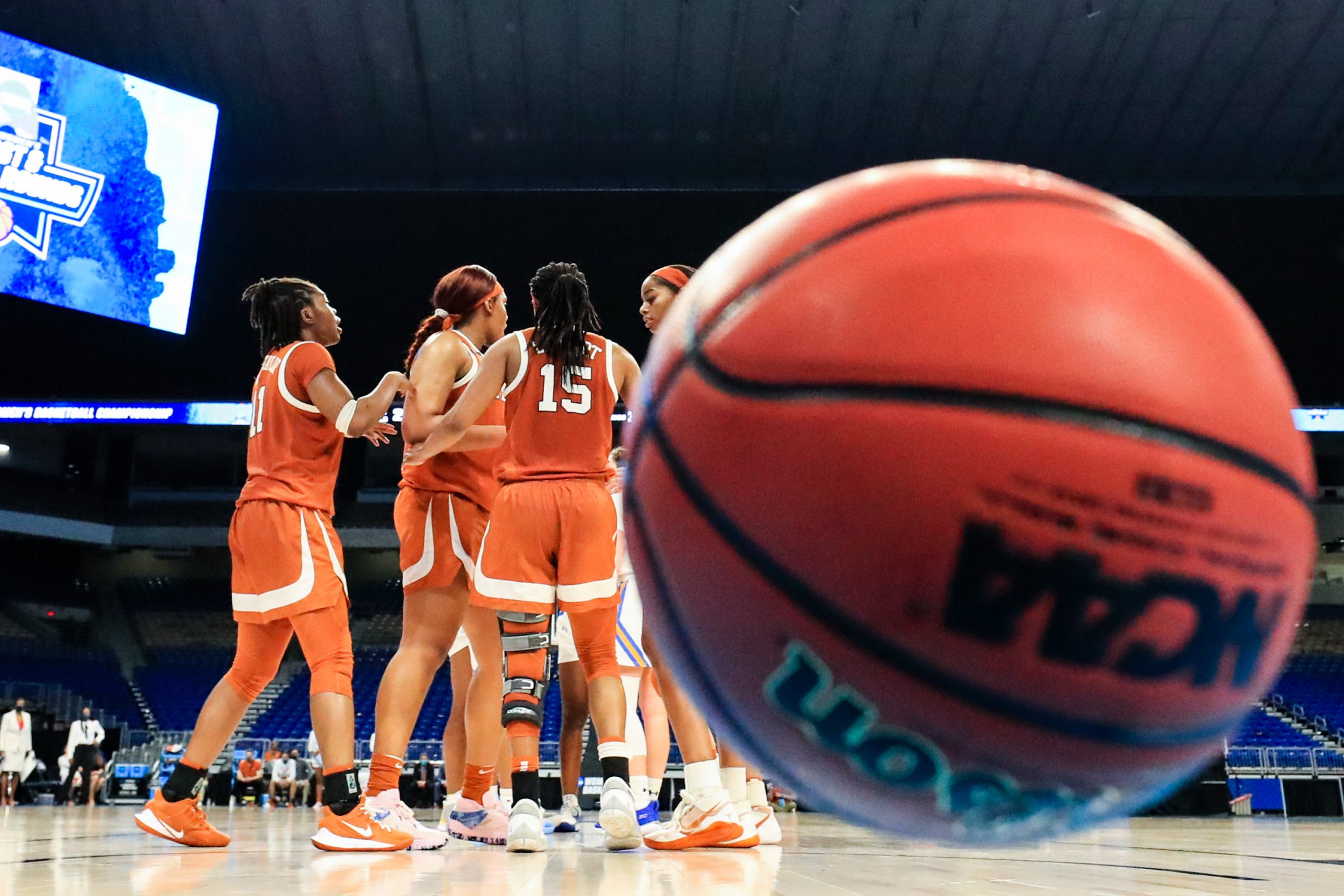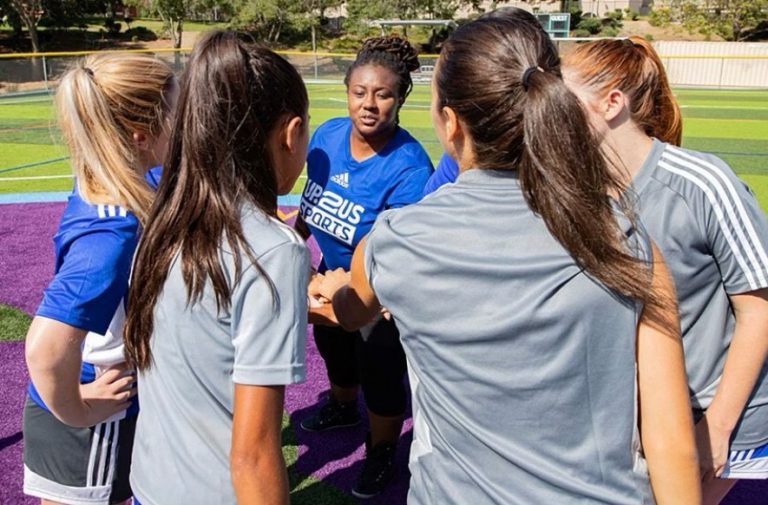Hey, Disruptors! Women’s Basketball Needs You
Why this matters
Victoria Jackson says that rather than waiting for the inevitable to play out and reacting to whatever the new reality will be, leaders in women’s sports could be anticipating, preparing, and welcoming the shock to the 'rotten system' that may soon come.
Where are the disruptors in women’s college basketball?
Women’s basketball doesn’t need the NCAA. The NCAA has made it clear it doesn’t really want them. So, to the movers and shakers investing in and reimagining the women’s professional sports space, I’ll be shameless here: Renee Montgomery! Julie Foudy! Natalie Portman! Naomi Osaka! Serena Williams! Chelsea Clinton! Sarah Spain! Please allow me to call to your attention: Women’s college basketball needs your help – your creative energy and your innovative brilliance.
Over the past couple of weeks – thanks to women’s sports journalists and activist athletes, coaches, and allies from all over the basketball and sports worlds – we have been shown yet again just how little NCAA leadership cares about women’s basketball. The gender disparities in the respective bubbles in Indianapolis and San Antonio serve as reminders that the NCAA has always and will always treat women’s basketball as an afterthought and as secondary to men’s basketball.
We learned that unlike the WNBA, the NCAA did not take into consideration that working mothers with young children should be accommodated within the bubble, and instead teams were placed in the difficult situation of choosing between essential staff and children to include in limited travel parties.
We also learned that sometimes NCAA leaders’ apathy toward women’s sports moves beyond the typical foot-dragging to actively working against the growth of women’s sports. NCAA leaders got caught in a lie and had to walk it back when they at first claimed women’s tournament organizers had declined to use the #MarchMadness branding but later the Wall Street Journal reported the NCAA had actually rebuffed organizers’ request to use it.
It’s time for the people who care about women’s sports to take back women’s college basketball.
This history is not a good one
Women’s college sports are a pestilence for the NCAA, in part because their very presence serves as an active, visible reminder that college sports opportunities are educational opportunities. Never forget the NCAA and schools spent nearly a decade after Title IX passed in 1972 trying, through the courts and friends in Congress, to gain an exemption for athletics from complying with the law.
But women’s college sports also are often deployed as a protective shield to defend the big-time college sports enterprise: We can’t pay the players – whose coaches are making millions and whose performances sell the college experience to prospective students and fuel the business of higher education. It will hurt women’s sports!
Both of these approaches to women’s college sports demonstrate their existence is in relation to men’s college sports. We’re subordinate; they’re legitimate. They’re deserving; we should be grateful for the opportunity that women not long ago were denied.
Systemically, women do benefit from the American college sports scheme
It is incredibly frustrating, but the fact remains that we do benefit from this big-time college sports setup, one that is unique in the world. The United States is the only place in the world that has elite sports development in schools; that has clung to amateurism after the world abandoned it (when the Olympics did); and that has a multibillion-dollar sports industry operating in higher education.
Then throw into this mix of quirky American exceptionalism our educational gender equity law, Title IX, and it’s easy to begin to see why Team USA women dominate at the Olympics Games. Our federations in charge of national team development – like the U.S. Soccer Federation – do not deserve credit for developing American girls and women. American colleges do.
What this all means is American girls and women are in a far better place than girls and women in pretty much every other country on the planet. And it’s no coincidence that the world’s youth athletes and Olympic hopefuls come to the U.S. to compete at our universities and benefit from our world-class athletics (and world-class academics to boot!) to best set them on a path toward their Olympic and professional sports dreams.
I am not stating all this to suggest that women athletes should be grateful for their opportunities to play in a second-class setup. Hell no. But I am laying this out as a gentle reminder that the current college sports system benefits us greatly.
But…change is coming, and we need to be prepared.
Because – and this is *the* huge caveat – this system is also rotten and built on the backs of mostly Black football and basketball stars at the predominantly white institutions of the NCAA’s Division I and especially the Power 5 conferences. And because it is rotten, many people over the past few decades have been working tirelessly to reform it from within or disrupt it from without.
Work for opportunities that include women’s basketball
Women’s college basketball may soon find itself in a sort of no man’s land as dramatic changes come to the college sports and elite youth development landscape. In the very near future, top high school boys’ basketball prospects will have a smorgasbord of options to choose from to best set them up for their professional futures – as athletes and beyond.
The NBA G League has increased its compensation packages and enhanced its educational offerings – including scholarships to Arizona State University – through its new “professional path program.”
The Professional Collegiate League is vocally and intentionally working to disrupt men’s college basketball more directly – offering both college scholarships and paid playing opportunities in a summer league that does not conflict with the academic year. Overtime Elite is the latest disruptor to the game, offering $100,000 salaries and an approach that allows athletes with clear professional ambitions to focus fully on developing as pros. Both the PCL and Overtime have expressed intentions to expand to women’s basketball in the future, so we should be preparing for this!
And if the many and varied attempts to reform college sports from within – through the courts, the Justice Department, state legislatures, and U.S. Congress – move us to an abandonment of amateurism…well, we don’t really know where women’s basketball will end up.
Will the sport be grouped with the so-called non revenue sports and within a scholastic model of sports? Or will women’s basketball be grouped with men’s basketball and football, the sports that may soon include athlete compensation, at minimum in the form of revenue sharing?
Follow the disruptors’ examples
Rather than waiting for all this to play out and reacting to whatever the new reality will be, leaders in women’s sports could be anticipating and preparing for the shock to this rotten system that may soon come – and that we should welcome.
Plus, I am fully confident you all could cook up something better anyway.
I know this because of the work you all are currently doing to invest in and amplify women’s professional sports and also because of history. During the near-decade that the NCAA and schools tried to get out of providing comparable sporting opportunities for women under Title IX, a women-led women’s college sports association – the Association for Intercollegiate Athletics for Women – envisioned an alternative model of college sports that attempted to prioritize educational opportunities and maximize elite sports experiences within that scholastic framework. This was a model of college sports in service of athletes, and leaders intentionally sought to build something explicitly different from the NCAA.
Where are the disruptors in women’s college sports? We can demand the NCAA do better, but we can also get to work envisioning and building a better model on our own.
Victoria Jackson is a Clinical Assistant Professor of History at Arizona State University. She is a former NCAA champion and retired professional runner.
Monthly Issue
The Power of Women & Girls in Sport
From participation to coaching, and shattering leadership ceilings, 2020 was slated to be a year of progress for women’s sport. But then came the pandemic.
2021 could still stand to be a significant year of growth for women and girls in sport. What long-standing barriers and future opportunities lie ahead?





